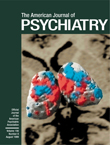To the Editor: Although it is quite evident from the article by Robert Paul Liberman, M.D., and colleagues that the authors made considerable efforts to control extraneous variables and conduct a well-controlled experiment, there is one major flaw in this study—that is, a confounding of the independent variables.
The authors’ abstract concludes: “Skills training can be effectively conducted by paraprofessionals, with durability and generalization of the skills greater than that achieved by occupational therapists who provide their patients with psychosocial occupational therapy” (p. 1087). There are two independent variables involved in this statement: namely, the treatment method and the provider characteristics. These two variables are confounded, and the unique effect cannot be isolated. If the research objective is to compare the effects of different types of providers, identical treatment should be used for both control and experimental groups by varying only the type of provider for each group. And if the research objective is to find the difference in the effects of two treatment methods, the same type of provider should be used for both groups.
The impression gotten from reading the article is that the authors’ primary interest was to compare the two treatment methods in terms of durability and generalizability of the skills acquired during the treatment sessions. The treatment conditions and durations were comparable, except for the provider characteristics. Three certified occupational therapists provided the treatment for the “psychosocial group,” whereas one occupational therapist (certification status not reported) and two paraprofessionals provided the treatment for the “skills training group.” The information on the role of the occupational therapist in the latter group was lacking, as was the background information of the so-called “paraprofessionals.” In order to compare the clinical skills of paraprofessionals and occupational therapists, many additional variables should be taken into consideration, such as educational background, hours of training, and job experience. These were not addressed in the article.
Two different assumptions can be made in regard to the provider groups, with alternative conclusions. Since occupational therapists are trained and qualified for both types of treatment approaches, it is possible that the occupational therapist in the “skills training group” helped develop the protocols and participated in the training of the paraprofessionals. If such was the case, this experiment could be interpreted to have compared two different treatment approaches used in occupational therapy.
According to the article, the paraprofessionals received extensive training for the treatment implementation. Both groups of providers, then, can be considered equivalent in regard to the qualifications and skills needed for particular therapeutic intervention. If the equivalency of the two groups of providers can be assumed, then the study compared two different treatment approaches provided by equally competent groups of providers.
In summary, the observed effect cannot be attributed to either treatment method or the difference of the treatment providers because of the confounding of the two independent variables. If the equivalency of the providers is assumed, this is a valuable comparison of treatment approaches, and the conclusion should address only the difference of the treatment approaches and not the provider characteristics. The authors’ abstract conclusion is misleading, giving readers the impression that the authors are questioning the occupational therapist’s clinical abilities.

